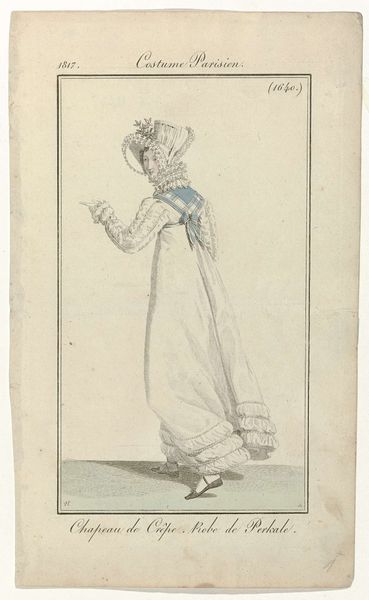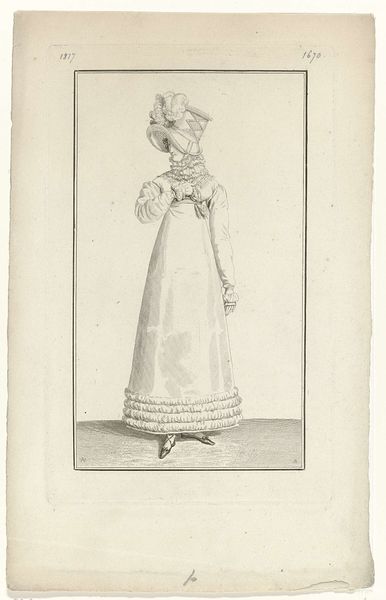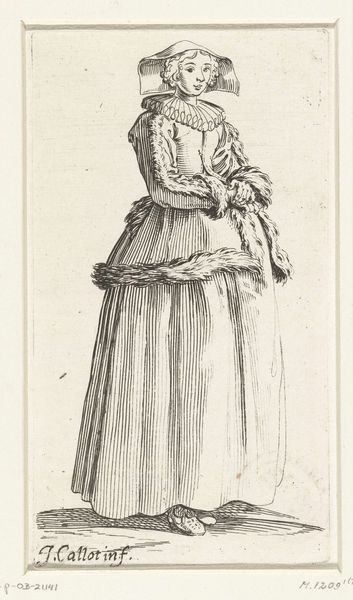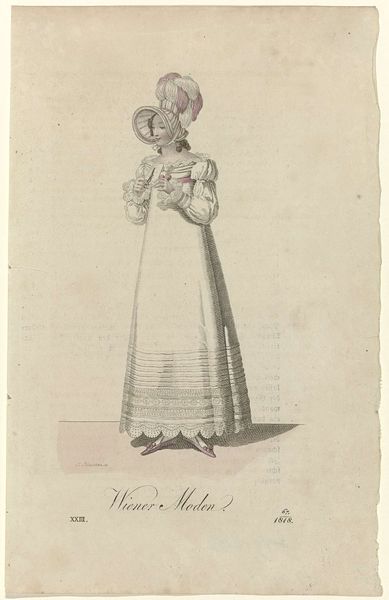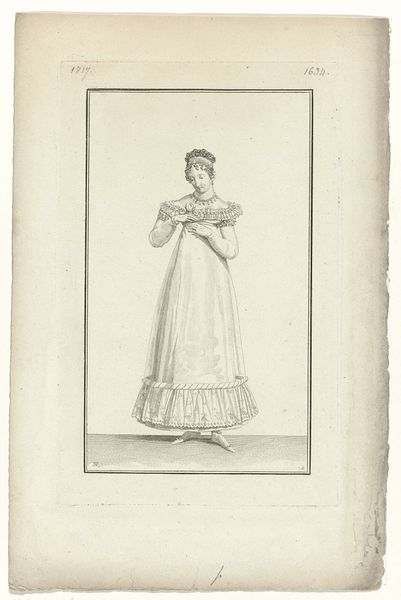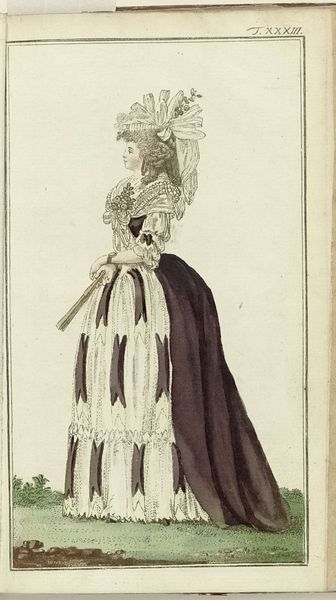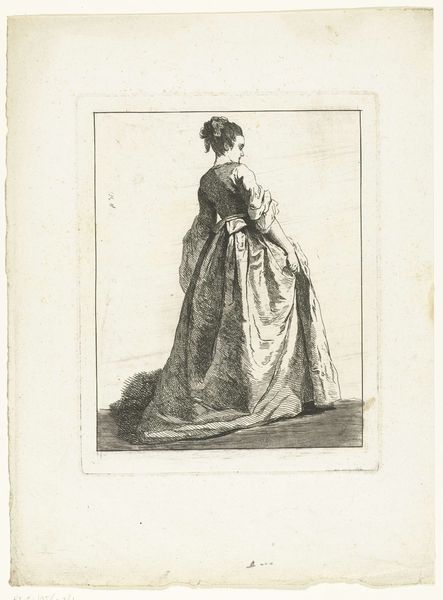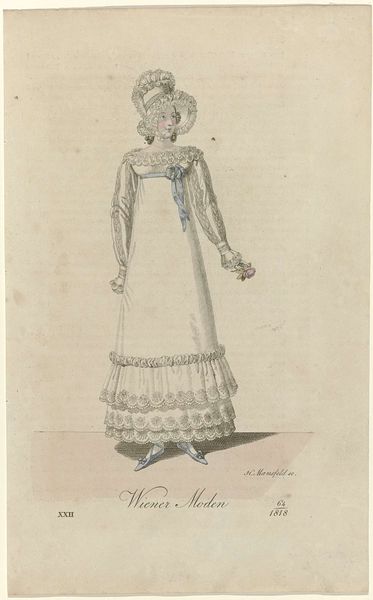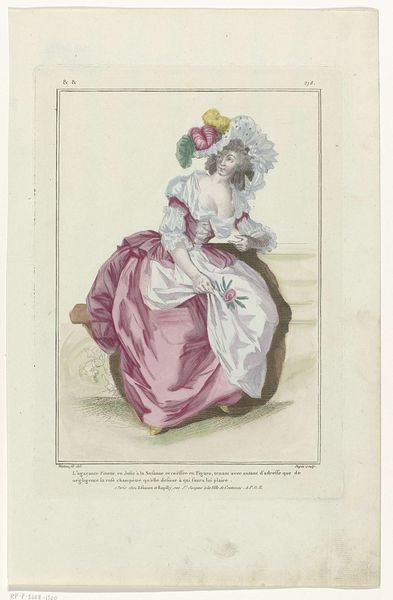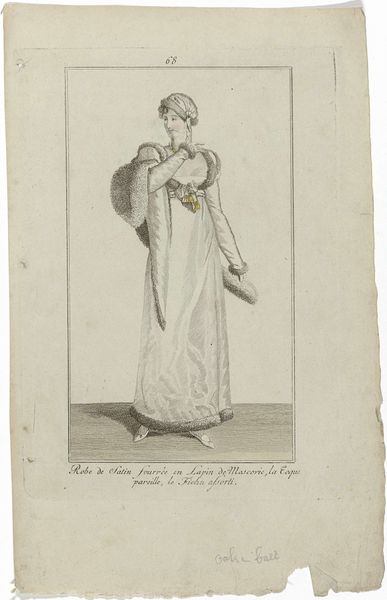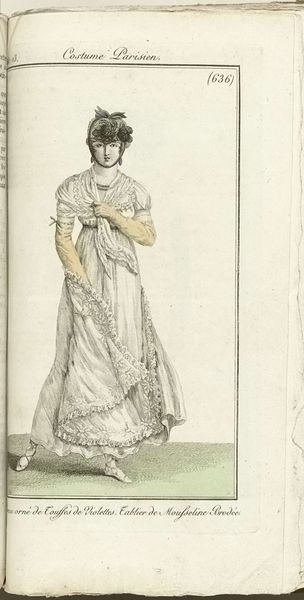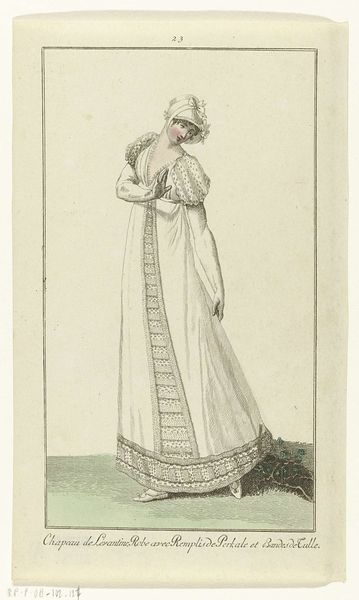
Incroyables et Merveilleuses, 1816, Merveilleuse, No. 28: Chapeau à l'Anglais (...) 1816
0:00
0:00
drawing, pencil
#
portrait
#
pencil drawn
#
drawing
#
light pencil work
#
pencil sketch
#
old engraving style
#
figuration
#
personal sketchbook
#
romanticism
#
pencil
#
sketchbook drawing
#
pencil work
#
history-painting
#
dress
Dimensions: height 360 mm, width 233 mm
Copyright: Rijks Museum: Open Domain
Curator: Let's explore this delicate drawing by Georges Jacques Gatine, titled "Incroyables et Merveilleuses, 1816, Merveilleuse, No. 28: Chapeau à l'Anglais..." from 1816. It’s rendered in pencil. Editor: It strikes me immediately as an exercise in lightness; a symphony of white offset with delicate shadows. That hat! It’s fighting for dominance in the composition. Curator: Indeed. Gatine’s artwork captured the fashion trends of the "Merveilleuses," which translates to "The Marvelous Women" during the Directoire and early Restoration periods in France, following the French Revolution. They were known for their extravagant and revealing neoclassical-inspired styles. Editor: And that extravagance is precisely what grabs attention. Look at the almost cartoonish proportions – the massive feathered hat and puffed sleeves, juxtaposed against the slender column of the dress. There's a clear tension created by these forms. Curator: The Directoire style emerged as a rejection of the aristocracy’s opulence. Yet, these "Merveilleuses" pushed boundaries. Think about the socio-political symbolism of that dress. They donned sheer fabrics and Grecian-inspired silhouettes, almost scandalously liberated compared to the styles of the Ancien Régime. It was a visual declaration of revolutionary ideals! Editor: Agreed, yet artistically it feels like Gatine revels in the details. He teases out the textures through controlled application of line and shadow. Curator: Consider also that fashion became a powerful means of self-expression after the Revolution, for women, specifically. Prints like these circulated widely. They dictated the trends and helped democratize style. They empowered women. Editor: Empowered through fashion, perhaps. But looking at this single "Merveilleuse," I wonder about the individual woman *underneath* all of that glorious fabric and ornamentation. She is so tiny beneath it all, doesn't seem happy and the sketch feels so incomplete. The focus seems to remain more on the visual performance than the person. Curator: Well, these images did indeed influence a broader social movement through fashion and design in France during the Post-Revolution era. It is a powerful example of the impact of art. Editor: Undoubtedly, and those sharp pencil strokes have much to say about art during that time. A perfect little document, captured by Gatine's drawing!
Comments
No comments
Be the first to comment and join the conversation on the ultimate creative platform.
